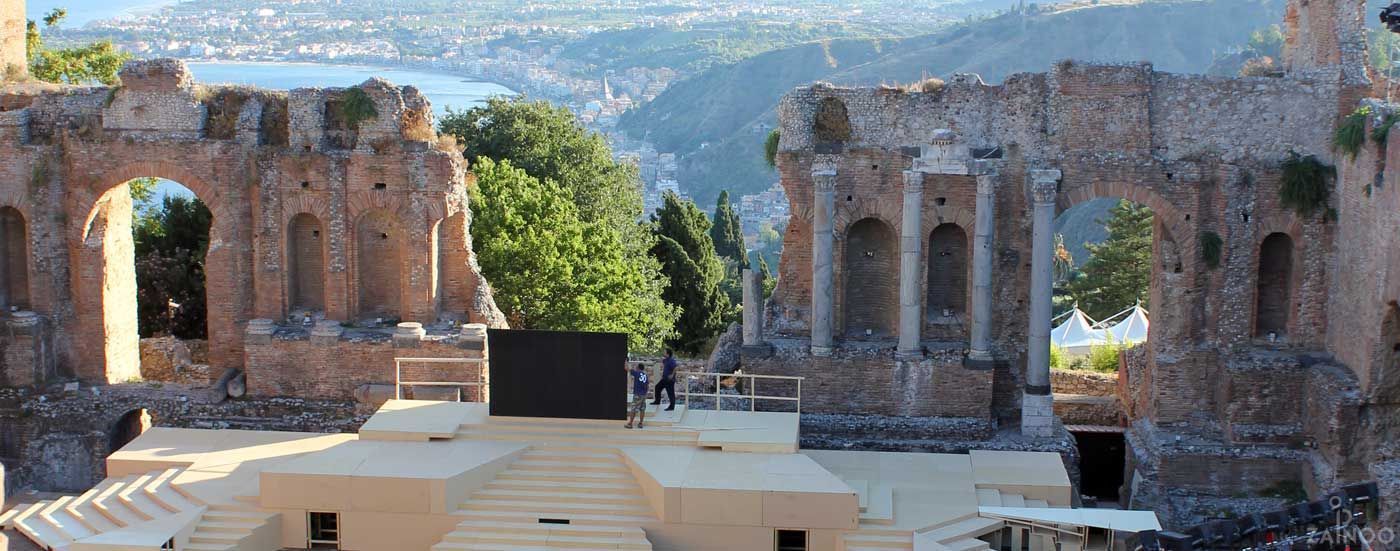History of Taormina
From a Greek stronghold to a famous sea resort
Taormina was settled very early on by the Siculi, who merged with the Greek population of Naxos in the 4th Century BC. As a vassal of Syracuse, the town experienced a long period of prosperity before it was conquered by the Romans. As the temporary capital of the Byzantine province of Taormina, it was the last Sicilian town which fell to the Arabs. After decades of turbulence in the Middle Ages and a slow decline of the town, Taormina was re-discovered as a resort in the 19th Century, bringing the town increasing prosperity until the present day.
Taormina in ancient times
The Siculi settled on Mount Taurus near the present-day castle and had a good relationship with the newly founded Greek city of Naxos from 735 BC. When Dionysius I of Syracuse destroyed Naxos, the Siculi granted shelter to the Greek settlers before the tyrant of Syracuse also conquered the Greek Tauromenion. With Andromachus, the father of the Greek historian Timaeus, a Greek ruled over the town for the first time in 358 BC. As an ally of Syracuse, the town experienced economic and cultural growth before it was first conquered by the Carthaginians and after the first Punic War finally by the Romans. As a Civitas foederata, the Roman Tauromenium now experienced another heyday. In the first Servile War, Taormina was one of the main strongholds of the slaves and allied itself with Sextus Pompey after the assassination of Julius Caesar, which led to the deportation to the population after Octavian’s victory.
Taormina from the Middle Ages until today
During the conquest of Sicily by the Arabs, Taormina temporary became the capital of the Sicilian province Byzanzs, before falling to the Arabs as the last Sicilian town in 902 AD. The Arabs destroyed the town after two uprisings in 962 and 969 and rebuilt it again. Under the Normans, Taormina gained in significance – in 1410, the Sicilian parliament met to choose a new king. However, the Spanish and French set in motion the decline of Taormina until the town was re-discovered as a holiday destination in the 19th Century. With the growth of tourism, the town gained in importance again and became one of the most popular resorts in eastern Sicily.


Tweet